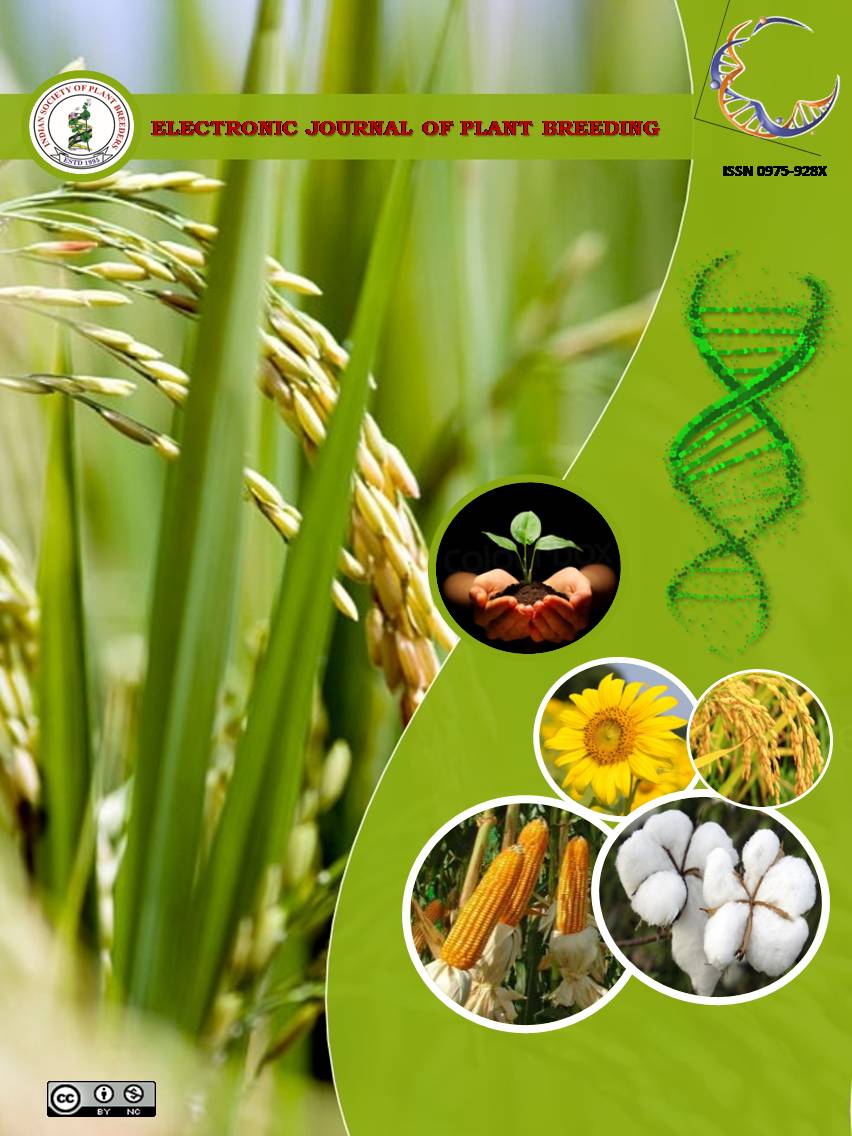Genetic variability, character association, path coefficient analysis in kenaf (Hibiscus cannabinus L.)
Abstract
Fifty germplasm lines of kenaf (Hibiscus cannabinus L.) were evaluated to study the genetic variability, heritability, genetic advance, correlation coefficient and path analysis for yield and yield attributes. The differences were statistically significant among the genotypes for all the characters. The genotype KIM-14 was found promising for fibre yield and yield contributing characters. The stick weight per plant recorded the highest variance at genotypic and phenotypic levels followed by plant height, days to flower initiation, days to 50% flowering, fibre yield and per cent fibre recovery and the lowest variance was for green weight and basal diameter. The higher phenotypic coefficient of variability (PCV) than genotypic coefficient of variability (GCV) for all the traits revealed that the characters were highly influenced by the environment. Days to 50% flowering showed high heritability followed by days to flower initiation, fibre yield, stick weight and plant height indicates a good amount of additive genetic components, can be easily utilized for the further crop improvement programme. Stick weight and plant height maintained higher and green weight maintained lower genetic advance. The moderate to high genetic advance with higher heritability over per cent of the mean was in stick weight and plant height indicates a preponderance of additive gene action. Thus, selections should make considering these characters to develop high fibre yielding varieties of kenaf. The value of genotypic correlation was higher than the phenotypic correlation indicates to eliminate the environmental effects for strengthening genetic association. The yield contributing characters were significantly associated with fibre yield per plant at both genotypic and phenotypic levels. Basal diameter (1.679) at a genotypic level and stick yield, per cent fibre recovery and days to flower initiation maintained positive phenotypic and genotypic direct effect on fibre yield per plant.

